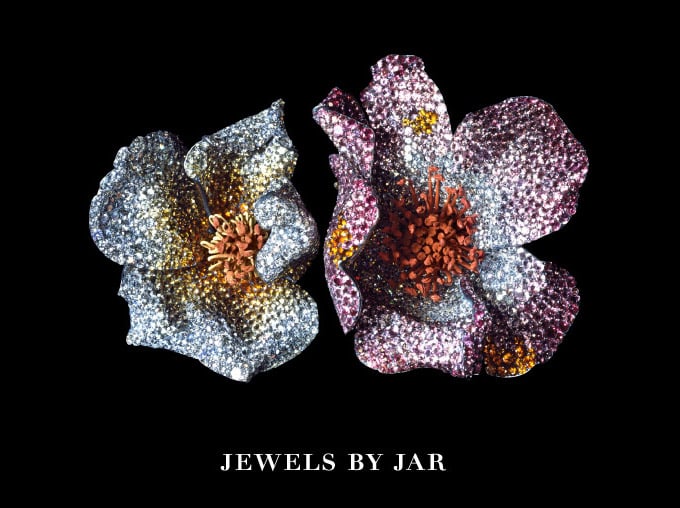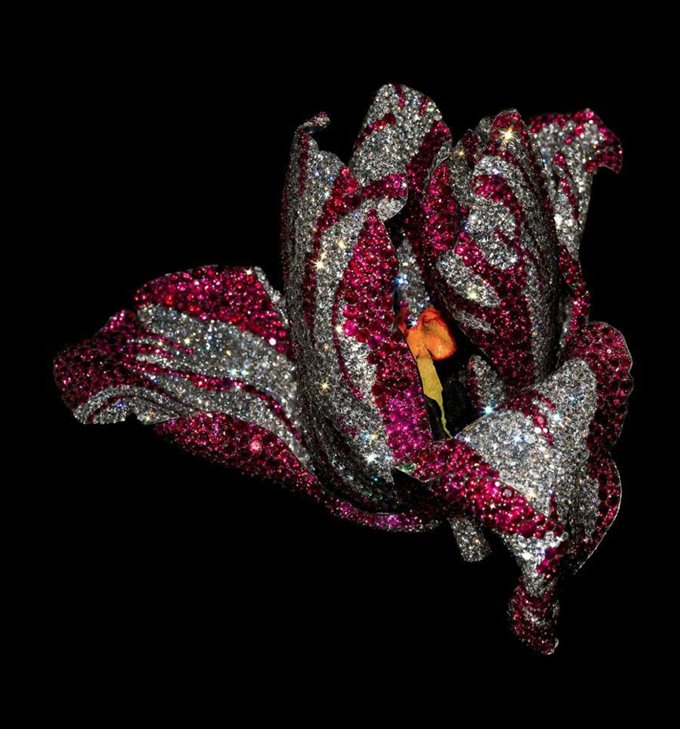How Are Diamonds Made? Natural vs Lab-Created Explained
Two Paths, One Diamond Not all diamonds come from the same place — but they all start the same way. Pure carbon, crystalized under immense pressure and heat. Whether it…

“Jewels by JAR,” renowned jewelry designer Joel Arthur Rosenthal’s first U.S. retrospective, opens on Wednesday, November 20, 2013, at the Metropolitan Museum of Art. The exhibition will feature over 400 works by the Paris-based jeweler who has been called “the Fabergé of our time.”
Rosenthal, who works under the name JAR, has created some of the world’s most exquisite one-of-a-kind jewels for the last 35 years. And there is as much legend and lore surrounding the elusive designer as there is interest in his creations, which have adorned celebrities and other high-profile clientele, including Elizabeth Taylor, Ann Getty, Lily Safra, and Ellen Barkin.
In a recent interview with the Financial Times, Rosenthal stated that he makes roughly 100-120 jewels per year. And these jewels command some of the highest prices at auction. In May 2012, at Christie’s “Jewels for Hope” sale of Lily Safra’s collection, a group of 18 jewelry pieces by JAR fetched $11.4 million, setting a record as the most valuable single-owner collection of JAR’s work ever sold at auction.
The Met is offering a companion book to the “Jewels by JAR” exhibition in addition to volumes one and two of JAR Paris.
Jewels by JAR • November 20, 2013–March 9, 2014
Exhibition Location: Lila Acheson Wallace Wing, The Helen and Milton
Kimmelman Gallery, Gallery 913

JAR Tulip Brooch with rubies, diamonds, pink sapphires, garnets, silver, gold, and enamel, 2008 • Photo by Jozsef Tari • Courtesy of JAR, Paris

JAR earrings with emeralds, diamonds, pearls, and platinum, 2011 • Photo by Jozsef Tari • Courtesy of JAR, Paris
From the Metropolitan Museum of Art:
Growing up in the Bronx, New York, Rosenthal spent much of his early life visiting the museums in the city, stirring in him a passion for art, history, and all things beautiful that has stayed with him throughout his life. Rosenthal left New York to attend Harvard University and moved to Paris shortly after his graduation in 1966. It was in Paris that Rosenthal met Pierre Jeannet—the other half of the JAR story.
Rosenthal and Jeannet spent much time at antique shops, museums, galleries, and auction houses learning about antique jewelry, diamonds, pearls, and colored stones. In 1973, they opened a needlepoint shop on the rue de l’Université. For Rosenthal needlepoint meant painting, mainly flowers, on a white canvas and playing with the palette of the colors of the wools. But the passion for jewelry was there and he wanted to “play with stones,” as he later explained. The needlepoint shop lasted only 11 months, but during this period Rosenthal was encouraged by others to re-design clients’ jewels and turned his attention once again, and more fully, to jewelry. In 1976, Rosenthal moved back to New York to work at Bulgari but returned to Paris and decided to open his own jewelry business under his initials, JAR.
JAR opened in 1978 on the Place Vendôme. At the start, it was run by a team of only two—Rosenthal and Jeannet. The clientele broadened from local Parisians to a range of international clients, and in 1987, Rosenthal and Jeannet relocated JAR to a larger space next door to their original shop—the same space from which they operate today. As they worked more and more with exceptional stones, they expanded the team to include the few exceptional craftsmen still specializing in this field.
JAR makes jewels that fulfill an aesthetic rather than commercial ambition. A particular skill of the JAR team is selecting stones for their color compatibility, complementary range, or contrast. Rosenthal, who once said, “we are not afraid of any materials,” uses metals as strong as platinum and as lightweight as aluminum as bases for his designs. He reintroduced the use of silver in fine jewelry making and blackened the metal to enhance the color of the stones and the shine of the diamonds. The color and the shading of his pavé technique became a signature, as did the diamond thread work.
Rosenthal experiments with a variety of forms, designs, and themes. Two significant and recurring themes in his work are flowers and butterflies, which often appear in the form of brooches. Rosenthal’s flowers are not shaped regularly, but rather capture the role of chance in nature—be it in the form of a bud, a flower in full bloom, or a falling petal. Each JAR piece is unique and three-dimensional.
Jeannet summarizes Rosenthal’s process this way: “At every step of the making of a piece, he checks and corrects. And if at the end his eye is not happy, we destroy the piece. But the piece, finished, is not yet at home; his last look is to see that the jewel has gone to the right lady. Then he sighs, his work is done.”

JAR Colored Balls Necklace with rubies, sapphires, emeralds, amethysts, spinels, opals, garnets, tourmalines, aquamarines, citrines, diamonds, silver, and gold 1999 • Photo by Jozsef Tari • Courtesy of JAR, Paris
Related Blog Topics:
The Metropolitan Museum of Art to Present “Jewels by JAR” this November
Jewels for Hope: Lily Safra’s Charity Jewelry Auction
Burmese Ruby, JAR Jewels Set Records at Lily Safra’s “Jewels for Hope” Auction